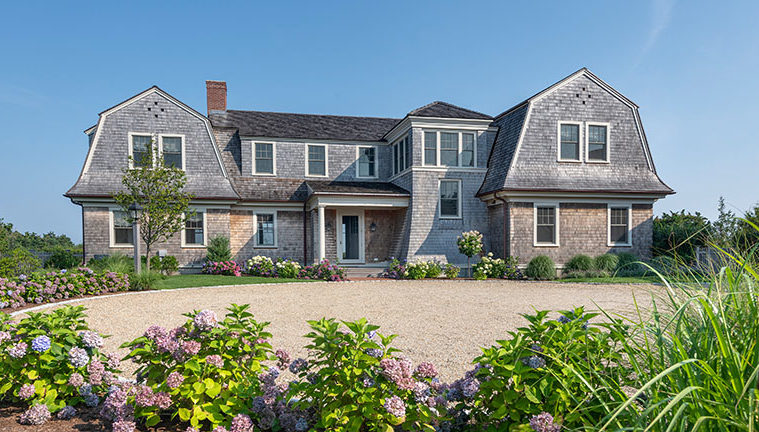Nestled on an idyllic site with sweeping views of the ocean and two iconic lighthouses, this Shingle-Style retreat on Nantucket is within a stone’s throw of three other houses, each belonging to people dear to the client’s heart—her parents, her brother, and her sister. Spatially, the residences are connected by footpaths; emotionally, they are tied together by a deep family bond that grows stronger with each generation.
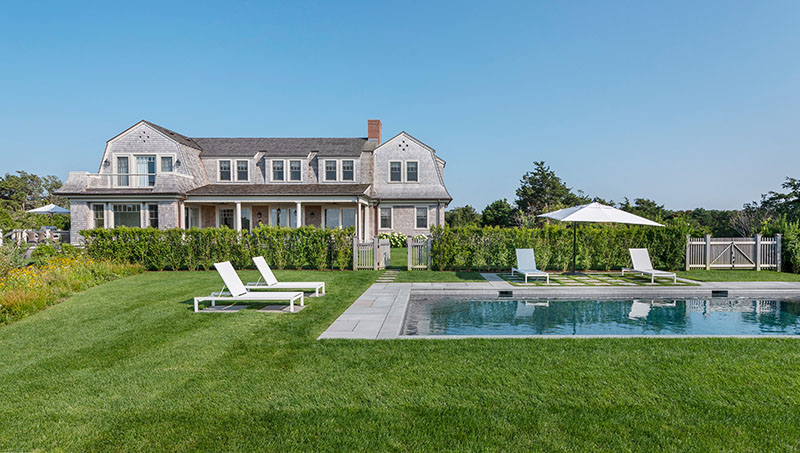

“Our appreciation for Nantucket comes from my parents,” says the homeowner. “Nothing is taken for granted.” Calling the spot “a quiet and beautiful slice of heaven,” she had an overriding concern when selecting who would design and build a year-round second home for her, her husband, their two young daughters, and a pair of dogs: “We wanted a special team to understand that the land is the gift,” she says, grateful that her parents snapped up a few acres in the 1980s and added on to the parcel a bit at a time.
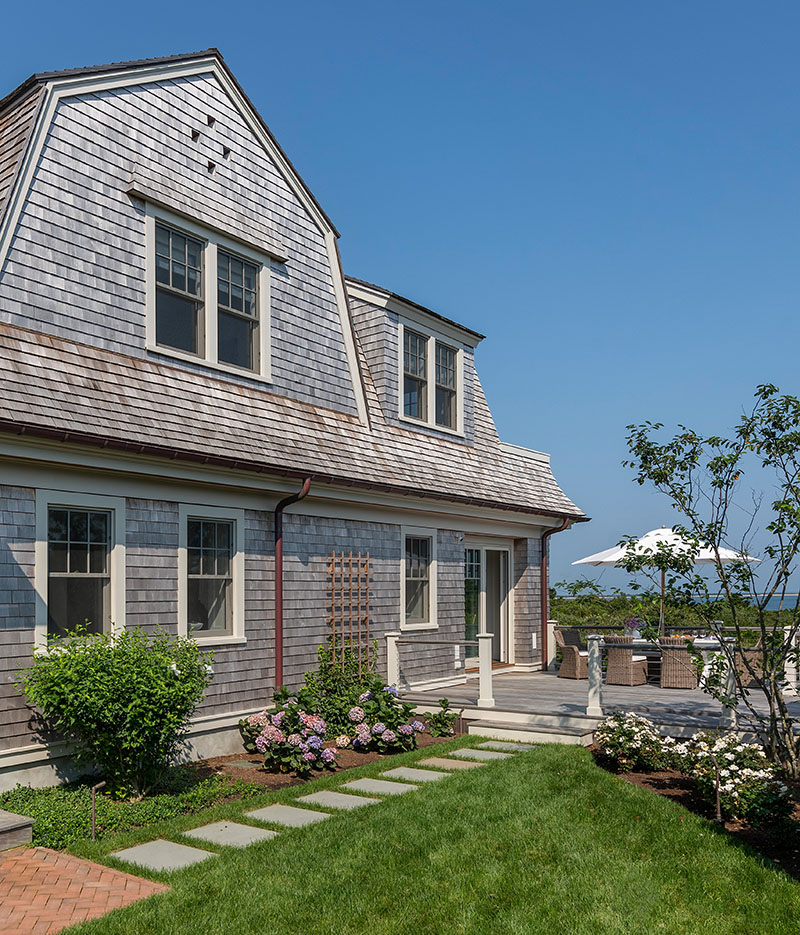

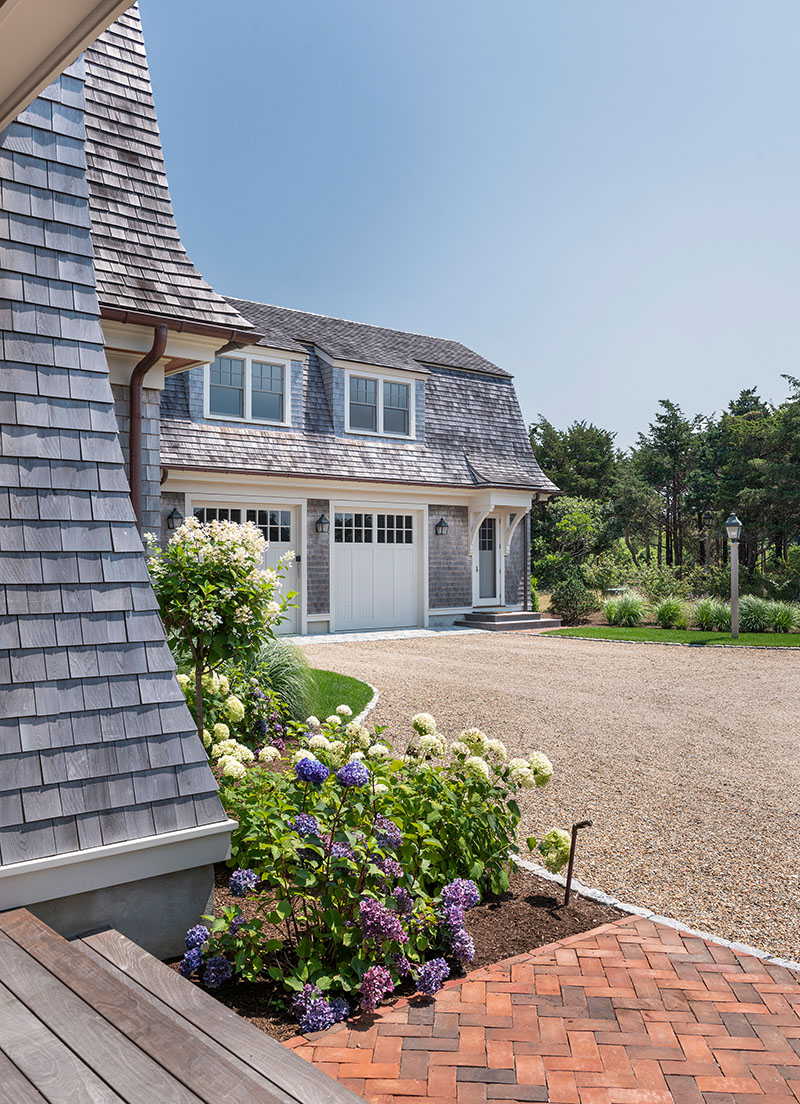

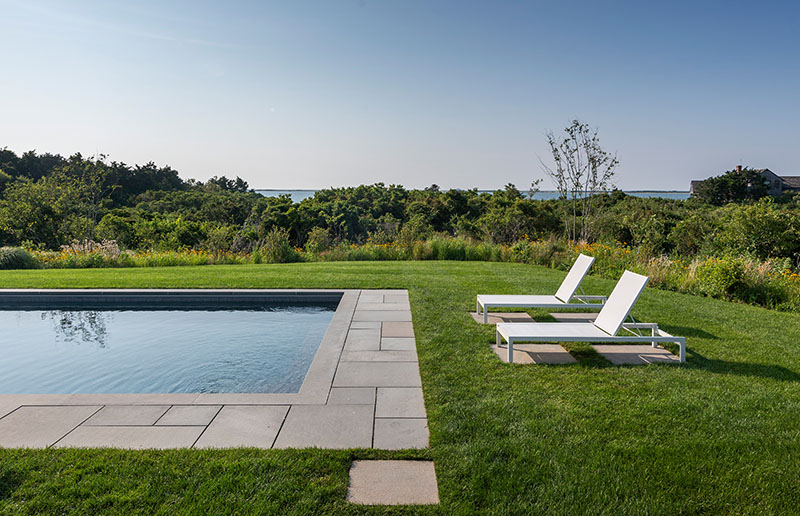

Shope, Reno, Wharton architect Michael McClung understood this sentimental attachment, and he clicked right away with the homeowners. So did the rest of a group that came to be referred to as the “dream team”: KVC Builders’ Brian Vona (also instrumental in assembling the team), Michael Coutu of Sudbury Design Group, and interior designer Corinne Acampora of Acampora Interiors. The foursome worked seamlessly together to deliver the simple but graceful island home the homeowners envisioned, one whose exterior design was inspired by the couple’s love of gambrel rooflines, and whose open floor plan and generous rooms invite gatherings of family and friends.
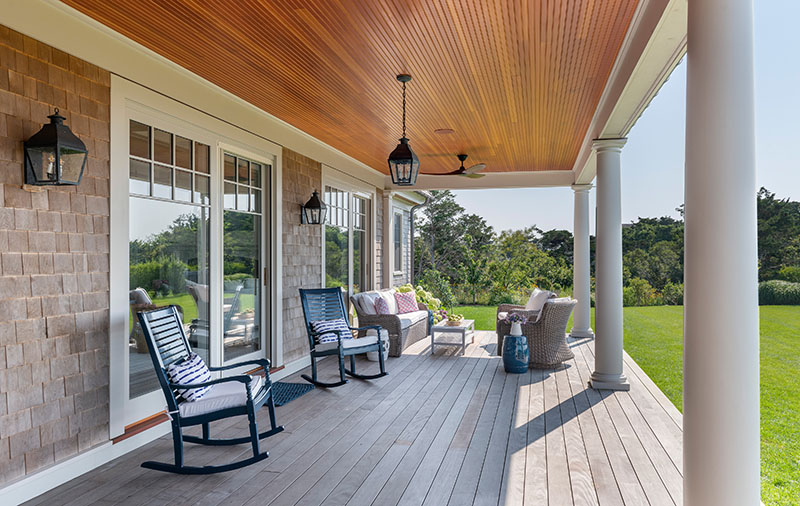

“The family wasn’t trying to create a coastal mansion,” says McClung of the four-bedroom, four-bath home. “They needed more than a cottage, but it pleases them that it has cottage qualities.” For instance, untreated white cedar shingles turn different shades of silvery gray, depending on whether they’re exposed to sunlight or sit in shadow, while the red cedar roof will endure the punishing shore winds for decades to come. Brought down to the first-floor level, the roofline helps the building feel smaller and scale-appropriate to its surroundings, and it also accentuates the house’s hospitable horizontal design. “Instead of thrusting upward, the house reaches out to the sides to engage with its surroundings,” observes McClung.
Incorporating different building masses—identical gambrels on the right and left tied together by a low-slung porch—helps to break down further the scale of the 4,600-square-foot house, as does the stair tower to the right of the entry integrated into the volume of the house. “The goal was to keep it cozy, private, and intimate,” says McClung.
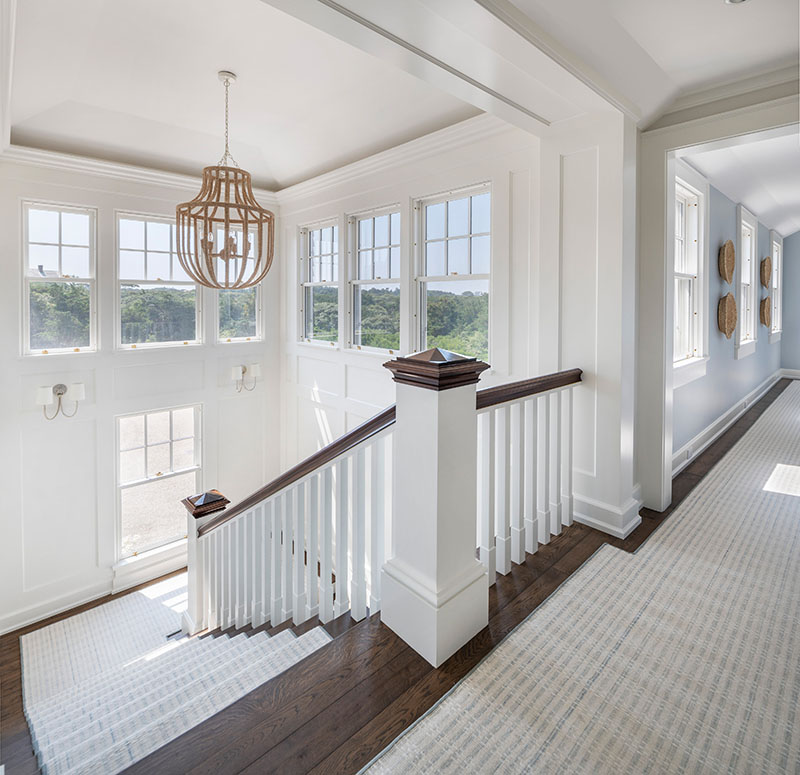

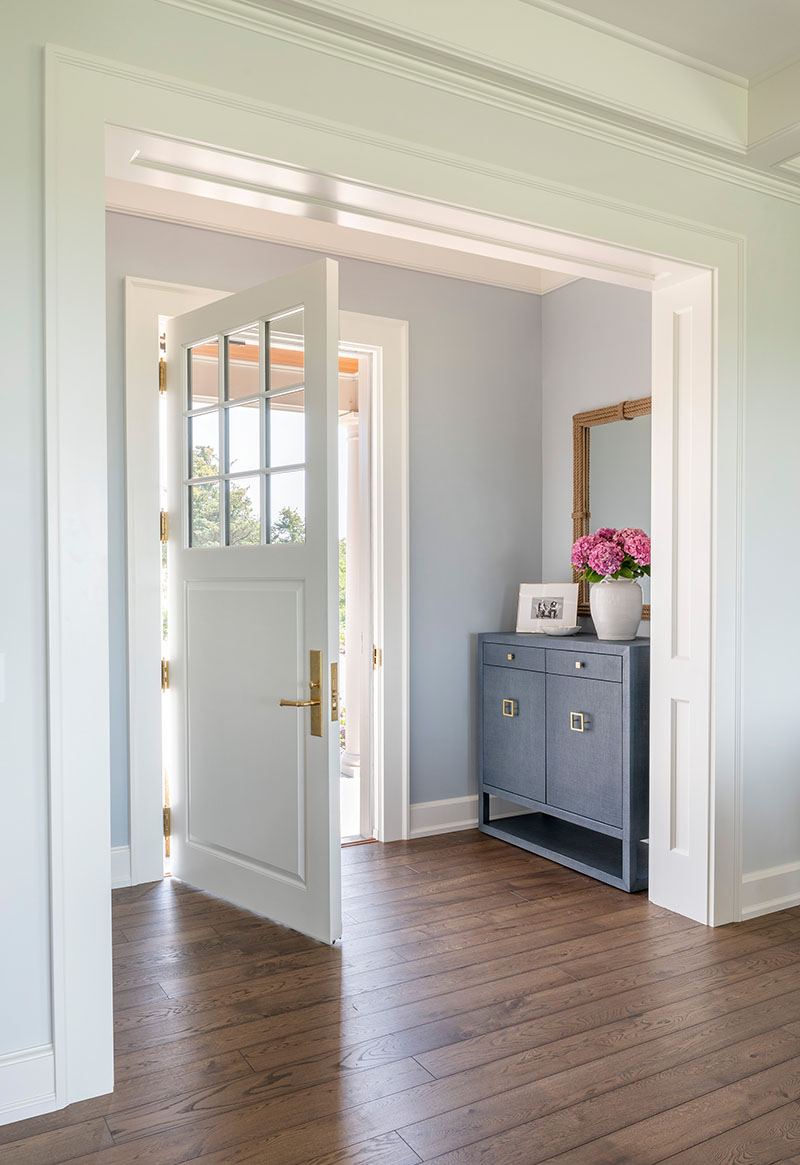

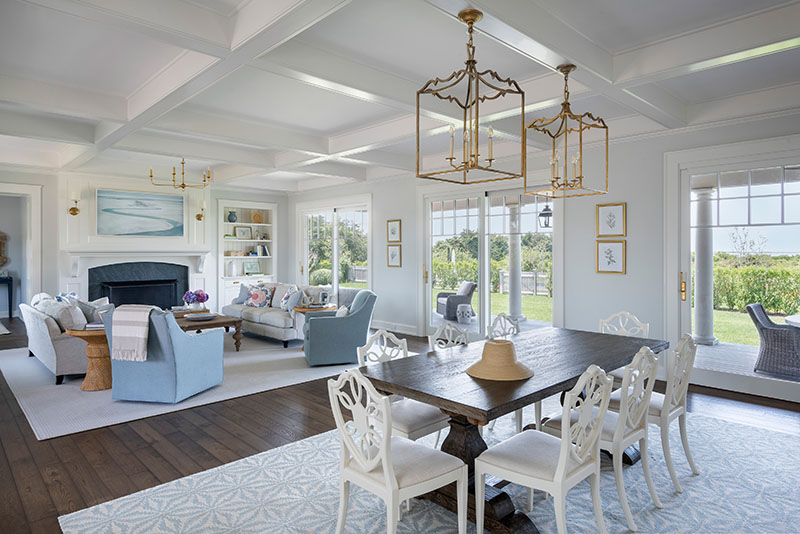

Even the arrival evokes cottage living: A seashell-paved lane leads to an intentionally small arrival court. “As soon as you get out of your car and enter the front door, you’re introduced right away to the dynamic view across the porch and over to the ocean.”
This view played a critical role in Corinne Acampora’s interior design strategy for the family room. So as not to obstruct the views, a sitting area was floated in the middle of the room, where two sofas and two swivel chairs face one another, an arrangement that allows optimum traffic flow. Nearby, an Arhaus artisan-created dining table extends to seat a crowd. Area rugs from Dash & Albert and Stark Carpet are light in color but exceptionally durable, as are the performance fabrics used for upholstery. More delicate fabrics, including those from Christopher Farr and Lee Jofa, were used for bedroom and bathroom window treatments.
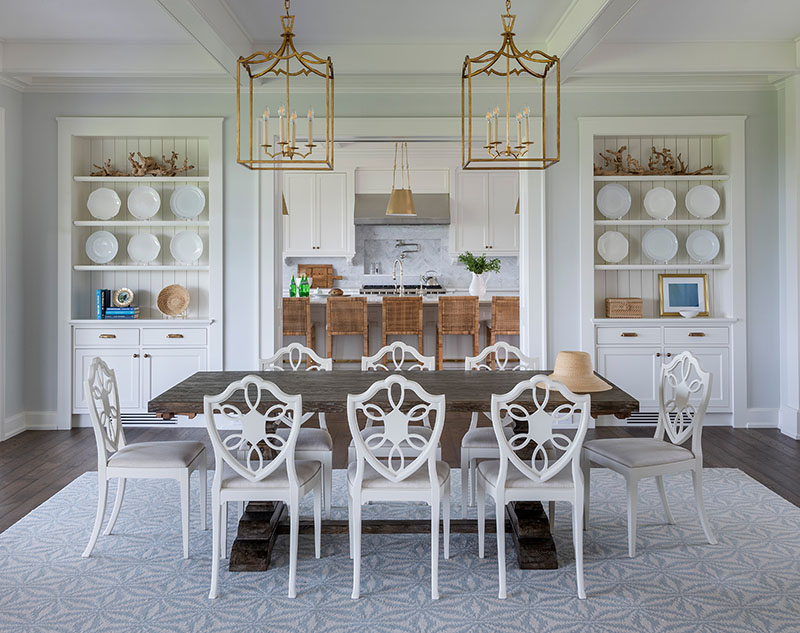

Acampora had the advantage of being a longtime friend of the homeowner, for whom she had collaborated on the family’s primary home outside of Boston. “Not only did I know her aesthetic and what she liked generally, but I also understood her and her family’s connection to Nantucket and how important this project was to them,” she says. “The goal was to make it feel like a beautiful coastal home, but one that was cozy and inviting.” Along with being a perfect backdrop for layering a variety of textures and vintage pieces, the mostly neutral palette makes it easy to transition the décor from summer to other seasons, since the family visits throughout the year.
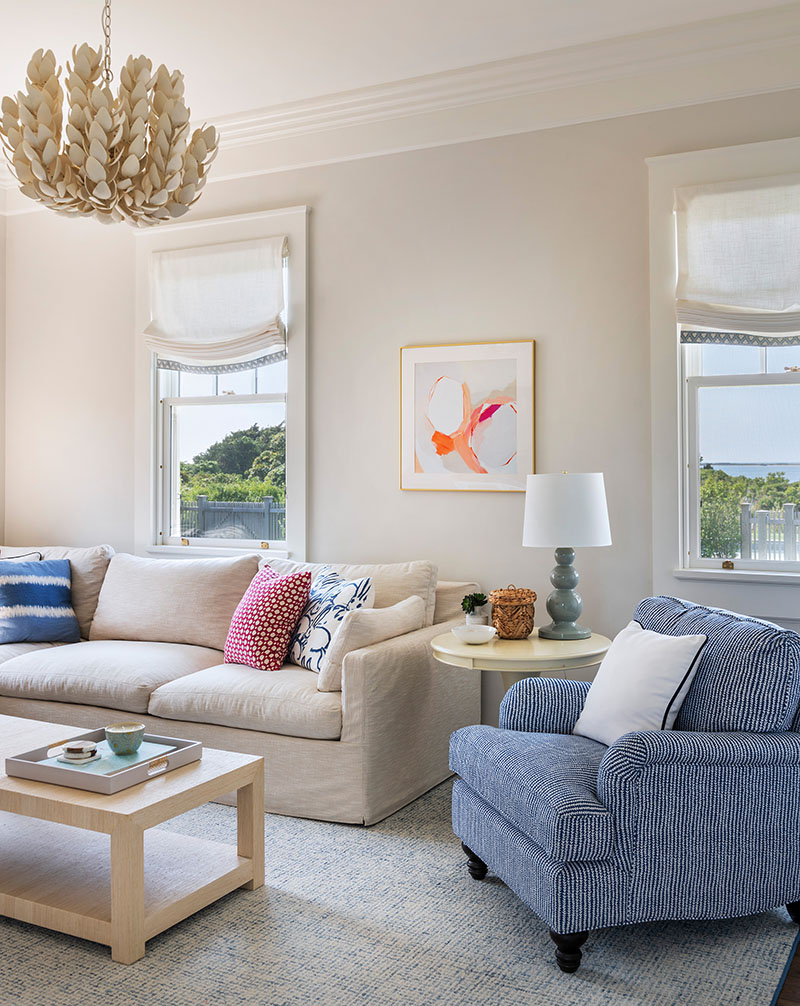

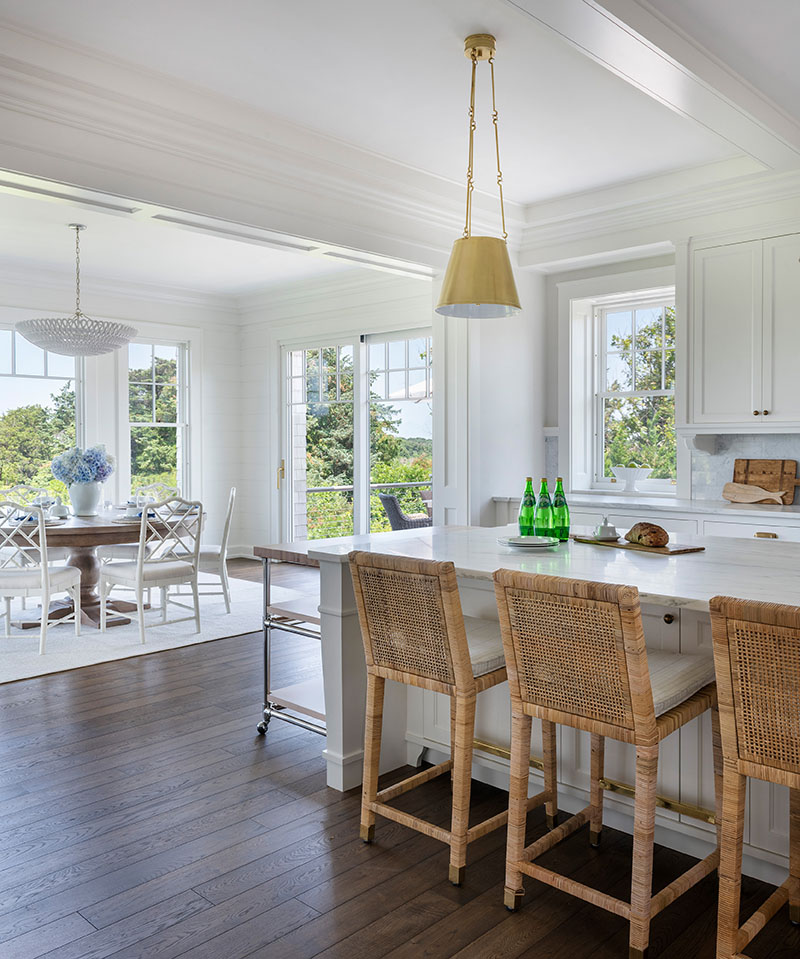

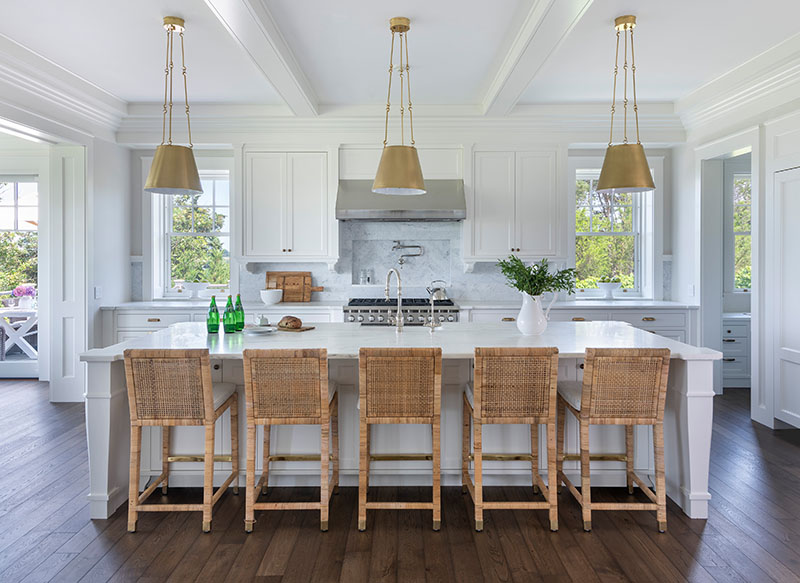

They also enjoy hosting groups big and small, and the architect responded to this with a number of different gathering places in addition to the family room: a den, a big kitchen open to a breakfast room, a long back porch, a side terrace, and even a cocktail balcony outside the primary bedroom. Like a child who shares traits with an older sibling, a garage with a guest suite above has a small-scale gambrel roof with dormer windows tucked into it.
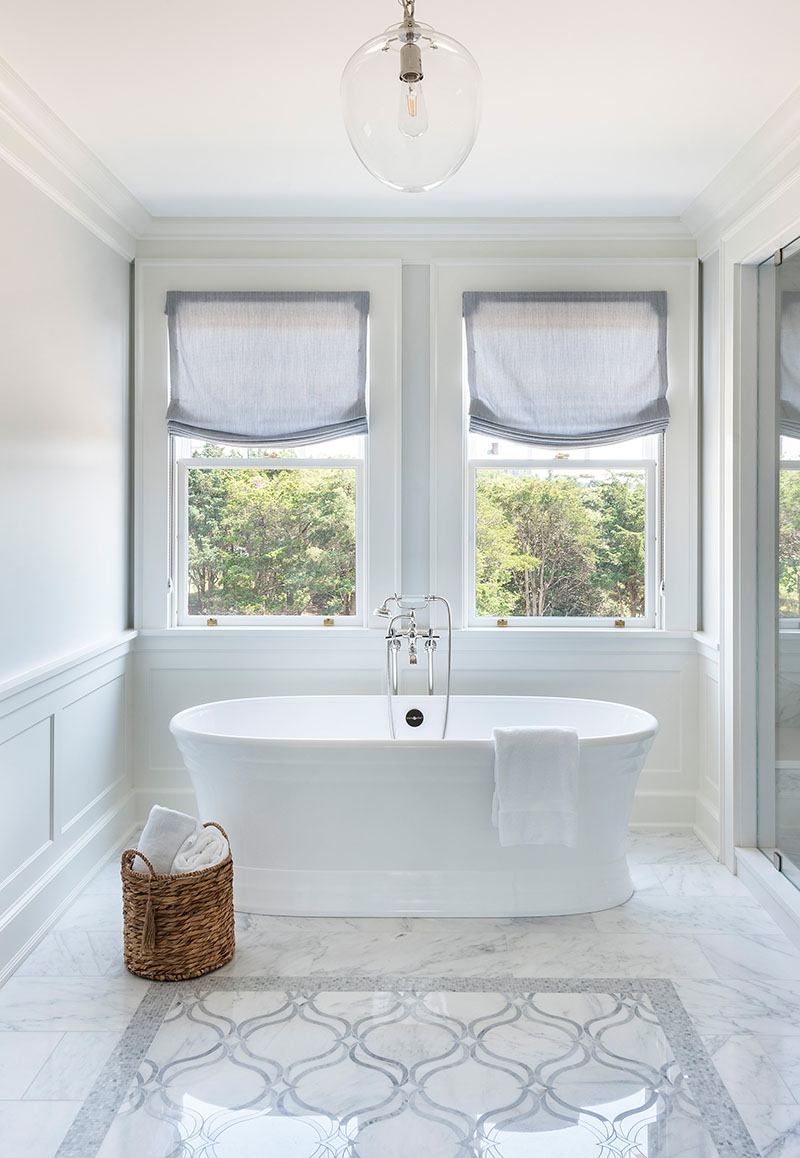

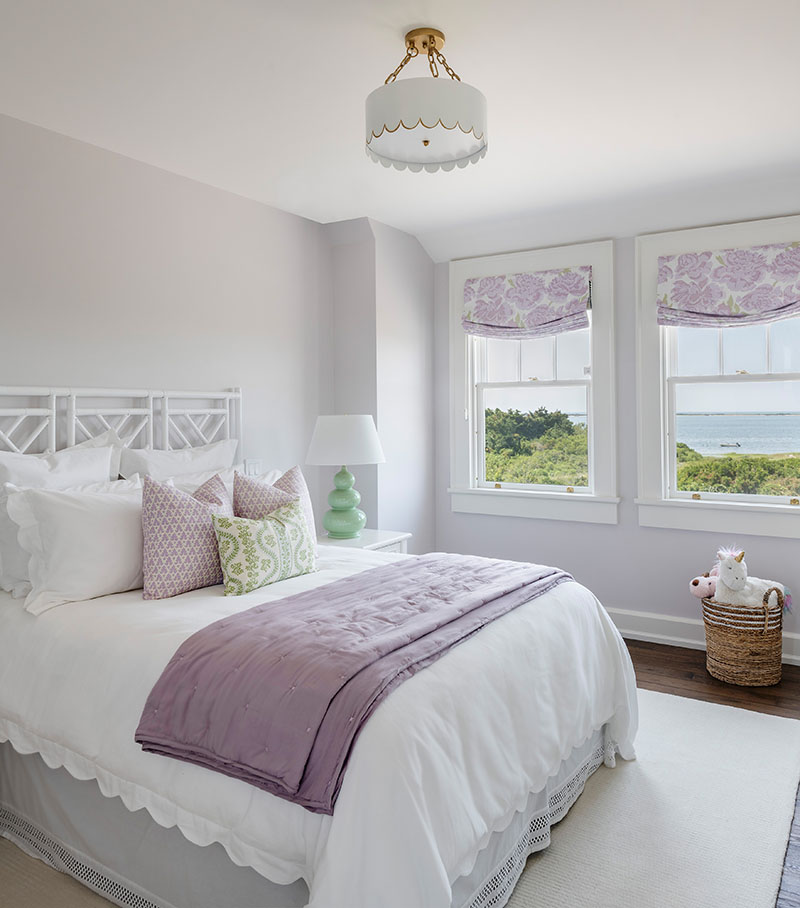

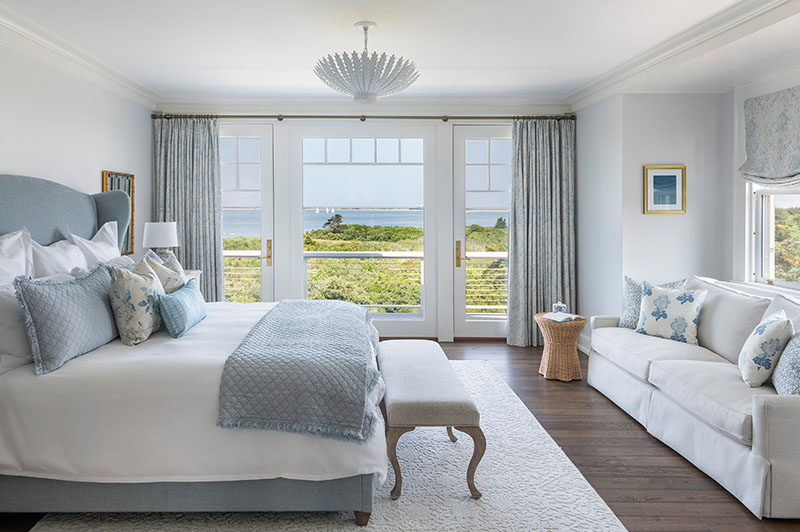

“The house is solidly built for future generations to enjoy,” says Brian Vona.
“Everyone wanted to keep this house simple, maximize the shared spaces where people enjoy each other, and frame the views, both out to the water and the inland views of nature,” says McClung. Although he is a visual guy by profession, the architect invokes a different sense when speaking of this project: “When the windows and doors are open, and you hear the rustling breeze, the birds, and the sound of the ocean, it’s a house that sounds really wonderful.”
For more information about the project team
Architect: Shope Reno Wharton
Builder: KVC Builders
Landscape architect: Sudbury Design Group
Interior designer: Acampora Interiors


